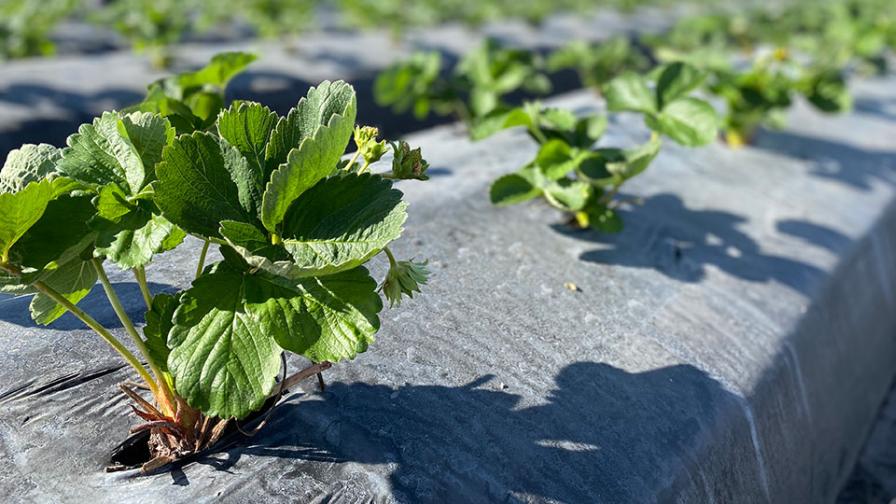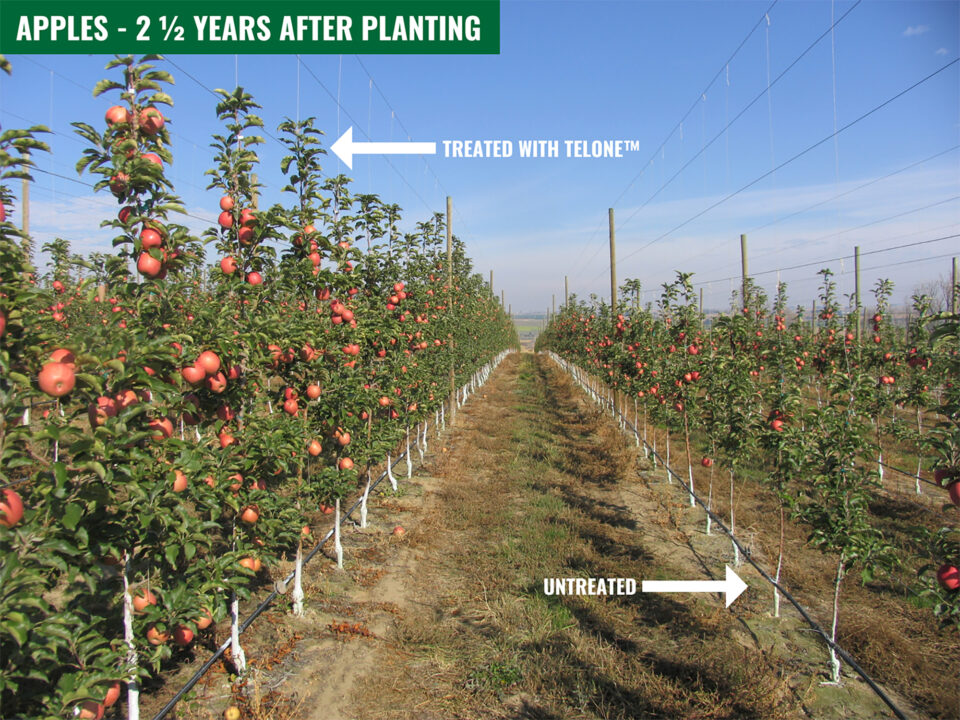How Some Produce Growers Are Overcoming High Fertilizer Prices
The cost of fertilizer has as much as tripled in some areas of the U.S., the American Farm Bureau Federation (AFBF) reports. Possible reasons for the hike are numerous: increased energy costs, trade duties, global fertilizer demand, supply chain issues, and increased prices for nitrogen, phosphorus, and potassium.
For farmers across the country, the issue is a “great concern,” according to AFBF President Zippy Duvall.
An alternative for produce growers is biofertilizer. Manufacturers of the product have positioned themselves to take advantage of the rising costs of conventional materials.
DPH Biologicals
In the short term, growers are looking for options for their typical fertilizer regimes, DPH Biologicals CEO Mick Messman says.
“These price increases — a 300% increase is the latest — are unheard of, and talks of fertilizer shortages are even more troubling,” Messman says. “If farmers didn’t lock in their fertilizer orders before, they need immediate alternatives.”
Meanwhile, in the long-term, the market instability of the last few years, in addition to weather, has combined with the fertilizer situation to “hammer home” additional uncertainty for farmers, Messman says.
“An apple grower in Wenatchee Valley or an almond grower in the Central Valley doesn’t influence the factors that affect a global fertilizer shortage. But they do have control over their soil health,” Messman says. “So, yes, the stress factor caused by the prices this year is encouraging farmers to take a new look at scientifically proven biofertilizers — and we are seeing increased interest in our products due to consistent in-field performance across millions of acres and crops.”
One such biofertilizer, TerraTrove SP-1 Classic, is a class of biological that stimulates natural microbial populations in the soil, creating a biologically active rhizosphere, Messman says. This environment helps plants more efficiently find and uptake the nutrients available in the soil naturally and can help reduce reliance on synthetic fertilizer applications.

Strawberry growers using SP-1 Classic biofertilizer saw improved productivity compared to untreated fields.
Photo courtesy of DPH Biologicals
“In some crops and applications, growers have reliably replaced a portion of their fertilizer needs with SP-1 Classic,” Messman says. “The amount of fertilizer replaced is dependent on the crop and management practices. For example, corn customers have reliably replaced a portion of their in-furrow starter fertilizer with SP-1 Classic — in some cases up to 50% when applied in-row with starter fertilizer.”
Locus Agricultural Solutions
Nitrogen and phosphorus alone are averaging a 147% increase from December 2020, according to Ward Gunter, Director of Sales, East Region, Locus Agricultural Solutions. To overcome these high prices, growers must look at ways to optimize the use of inputs by unlocking NPK nutrients already in the soil and enhancing their uptake by the crop, he says.
“The right biologicals can do this,” Gunter says.
In turn, Locus AG is seeing more grower willingness to try new inputs or practices that may not have been considered before the pricing and availability challenges. In addition, there is a larger interest in understanding soil health.
“We’re having many more conversations with growers across the U.S. on building customized programs for them,” Gunter says.
Locus AG produces microbial soil amendments, or soil probiotics, which feature microorganisms strategically selected based on high field viability and their beneficial biological activities related to specific crop types, including fruit and nut crops. They can be used as part of an integrated program tailored to each grower based on growing region and soil type.
The soil probiotics assist with rising costs of conventional products in two key ways, Gunter says:
The first is by unlocking nutrients that are currently tied up in the soil and making them more available to the crop. The soil probiotics have unique mechanisms of action ranging from superior nitrogen use efficiency and supercharged carbon sequestration to better phosphorus solubilization.
The second is by developing a more robust root system. This allows the plant to more efficiently take up the fertilizers that are applied. Field trials in Florida citrus groves have shown up to 77% increases in root biomass compared to an untreated check. Empirically, Locus AG has also witnessed Florida growers who use its soil probiotics to reduce the amount of fertilizer applied while improving production and quality.
In addition to helping with rising costs of conventional products, use of Locus AG’s soil probiotics leads to higher yields, Gunter says, even in trees infected with the incurable disease Huanglongbing.
“Field results in commercial citrus have demonstrated up to 11% increases in boxes per acre, 6% to 12% increases in pound solids, and up to 9% increases in juice quality ratings,” he says.
Sym-Agro
The rising input costs have generated a common concern with growers and consultants across the country, according to Sym-Agro Southern California Sales Manager Don Yadon.
“The struggle will be how to manage higher input cost without compromising yield, quality, and plant health,” he says. “Now, growers can look at alternative strategies that have benefits that go beyond just controlling a pest or providing necessary nutrients.”
Growing high-value crops requires establishing strong “critical values” to assure excellent fruit quality, yield, improved plant, and soil health, Yadon says. Biologicals and biochemicals are growing in popularity because of these added benefits that they provide, he adds.
For example, growers can choose biostimulants to improve root rhizosphere integrity. Sym-Agro’s Cartel is a microbial inoculant that supplies Trichoderma, Bacillus subtilis, and Pseudomonas to the root area that will be recruited into the rhizosphere for disease protection and improved nutrient uptake.
“Biologicals and biochemicals are friendly to the plant at the molecular level; therefore, they are not alien to the plant,” Yadon says. “These products do not change what the plant does. It only enhances what a plant is supposed to do.”
Timac Agro
Rising costs have every grower wondering how to best optimize every pound of fertilizer they are applying and whether biological solutions can help them to accomplish this, according to Alexander Duffy, National Product Manager with Timac Agro.
“The rising price also puts the higher-priced inputs in a better economical position and is opening some minds to alternative solutions,” Duffy says.
Pacific Gro
Pacific Gro has for the last few years supplied large growers who have reduced their synthetic NPK inputs and, in turn, rely on biologicals to improve nutrient uptake.
“Microbes and enzymes can source ‘locked-up nutrients,’” Pacific Gro Marketing Director Warren Shoemaker says. “This trend is increasing due to its effectiveness and will accelerate in response to higher NPK prices.”










